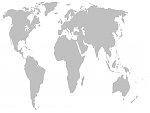23. November 2016
Missing Maps: Putting People on the Map
 There are places on our planet where people live but there is no map. How are NGOs like Médecins Sans Frontières (MSF) supposed to do field work if they don’t know where people live, how many, how to get there? The Missing Maps project is addressing the issue via crowdsourcing. I gave it a try, and here’s what I think.
There are places on our planet where people live but there is no map. How are NGOs like Médecins Sans Frontières (MSF) supposed to do field work if they don’t know where people live, how many, how to get there? The Missing Maps project is addressing the issue via crowdsourcing. I gave it a try, and here’s what I think.
For many years, I had been involved in volunteering efforts of one or the other kind. It helps you give a sense of purpose. However, in my first year after university, — my first year at work —, I did not do much at all and I soon felt there was some gap in my life.
After a while, I got involved as a organiser in a local Meetup group for runners in London. This definitely was an improvement. It is good fun to organize small (half-)day trips to the benefit of others and myself. Still, given that I can consider myself lucky in so many aspects, and have been given so much by others throughout my life, I thought I could start doing a little bit more, again.
Fortunately, at my workplace, there was an opportunity: Organisers were needed for running a “Mapathon” for Médecins Sans Frontières (MSF, www.msf.org) at work. I have been supporting MSF for several years financially, but here was a chance to get to meet people from MSF, and to contribute with my time & more directly as well. So, I agreed to help organising. Even though this is of course far away from any actual field work.
As part of the Missing Maps project (www.missingmaps.org), these so-called Mapathons are held around the world in various contexts and settings. The idea is to have a group of people get together in some venue, and then map a certain part of the world by annotating satellite imagery. For example, you as a Mapathon participant would look at satellite images and identify settlements, individual buildings, roads and other man-made structures.
So how did my first two Mapathons go? Members of MSF, the British Red Cross, the Missing Maps team, the Humanitarian OpenStreetMap Team instructed us Mapathon participants on how to get started, motivated us with stories telling us why the mapping helps the NGOs to operate effectively and efficiently. I was relieved, they were providing us with the knowledge on how to solve simple mapping tasks: how to spot buildings, how to spot roads, what to do in case of uncertainty, and so on and so forth. No previous skills needed!
The NGOs define the mapping needs. For example, MSF might need the map in order to understand the travel time between one of their hospitals to various settlements. Or there might be emergencies such as earthquakes where there is urgent need to complete maps in certain areas. Other reasons might be detection and monitoring of the outbreak of diseases — having estimates of population density helps here. The Humanitarian OpenStreetMap team (www.hotosm.org) provides the crowdsourcing platform. NGOs such as the Red Cross and MSF can then submit mapping tasks for volunteers to pick up.
The mapping itself is somewhat repetitive. You look at forests in Congo, you scan stretches of land in Chad for settlements, buildings, and roads. The quality of the satellite imagery varies, and sometimes it is hard to distinguish a road from a river, a roundhouse from a tree. The annotated structures are reviewed by other, more experienced volunteers. Given that mapping is essentially a classification problem, we have the issue with precision versus recall. One the one hand, for example, you don’t want to miss settlements, on the other hand you don’t want to put settlements on the map that actually don’t.
Generally, I got a good impression. On a high level, the mapping is valuable, because it helps data-driven decision making, and I am buying the argument that such data collection might help to put focus also on more long-drawn issues beyond disasters with “sensational” value.
Finally, at a very recent Mapathon I helped to organize at work, I finally tried the Mapswipe app (mapswipe.org). Rather than annotating individual buildings on a notebook or desktop computer, you can just categorize tiles on satellite imagery into those with buildings, those which might have buildings, and those tiles where the image is bad. It is a successful gamification of a crowdsourcing project, and I am excited to see that there are “games” that serve a purpose beyond pure entertainment. Give it a try!